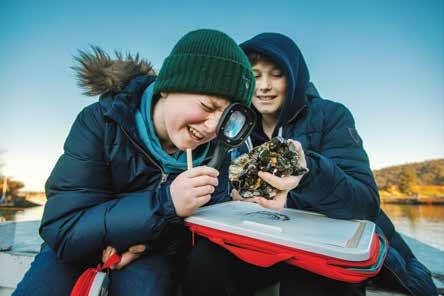(THIS ARTICLE IS MACHINE TRANSLATED by Google from Norwegian)
Kids swimming, seagulls stealing ice, adults on the ferry to and from work and crabs hiding among seaweed and kelp: We are all a part of Oslo Fjord's marine neighborhood. But most of us have barely greeted the species that make up life in the fjord. Our poor knowledge of marine species and what threatens them has made us bad neighbors. If we do not do something powerful now, we risk being left with an impoverished and poor fjord. Future generations will lose a vibrant coastal nature. Then it is a pity that the rescue plan for the Oslo Fjord talks down the restoration of the destroyed habitats to our vital neighbors.
The blue highway
"We must be able to say that we saved the fjord!" proclaimed the Minister of the Environment. And Sveinung Rotevatn serves many good measures to preserve natural values and ensure outdoor life. The Oslo Fjord will be made more accessible to everyone. But who exactly is everyone?
1,6 million people live by the Oslofjord. But the beach zone huser also a colorful multitude of seaweed and kelp, crabs, fish and seabirds. We are just one of many thousands of species.
At the same time, the fjord's marine ecosystems are so thin that they can no longer keep fish and seabirds with enough food. Where land meets water, and man meets seaweed and kelp, we spread out with houses, cottages, piers and artificial sandy beaches. We are removing the seabed to make room for large ships on the blue highway.
Can we recreate growth surfaces for seaweed and kelp that in turn become habitats for snails,
crabs and fish?
With ballast water and climate change, alien species such as Pacific oysters are taking over the local species diversity. Sewers, road systems and agriculture sludge down these blue forests with far too much nutrients. When such habitats and food chambers disappear, the species also disappear and the ecosystem collapses. When was the last time you caught a cod on the hook?
Active restoration measures
With a spotlight on outdoor experiences, the Norwegian Environment Agency's rescue plan appears to be people – centered.
The rescue plan is full of well-known arguments that the fjord should be clean of environmental toxins and plastic. Nutrients from agriculture and sewage will no longer be allowed to seep freely into the meadows of eelgrass. The municipalities will tighten control over the demolition of the beach zone. But in addition to removing sources of encroachment and pollution, we must actively recreate destroyed or lost habitats. Then it is a pity that the chapter on restoration appears uninspired and unclear.

Oslo Fjord School
The goal of restoration is to recreate robust ecosystems, so that the fjord with its species richness can withstand human pressure without losing its ecological functions. Increasing climate change is an important part of the pressure that we humans put on ecosystems.
The Prime Minister's Global Ocean Panel has stated that restoration is an important part of the solution to save coastal and ocean areas. But the rescue plan for the Oslo Fjord gives the impression that this is only relevant in certain cases. The plan uses an outdated definition of restoration: «å return nature to its original state ». The chapter is more about what should not be done, such as that explosive masses are not suitable for making artificial reefs. This is beyond the potential of repairing damaged beaches. It puts unnecessary and unfortunate ties on the opportunities that exist.
Rur, bladder wrack and gray gulls
What the fjord needs most now is that we find out how we can live in interaction with all its inhabitants. The solution is found in nature, we just have to get to know our neighbors better, because they know what they need.
Nature is a master at solving challenges. The key lies in diversity. Since individuals of species are slightly different, some of these cope with environmental changes better than others – and have more offspring. Such evolutionary mechanisms shape the adaptations of the various species. For example, the rudder has found the solution to the extreme life on the shore, and closes itself inside its lime house so as not to dry out when there is low tide. The bladder wrack has air bubbles to float and ensure access to sunlight. And the gray gull has realized that where there are people, there is also food. The problem arises when the changes happen too quickly for the species to keep up.
1,6 million people live by the Oslo Fjord.
And that is what is happening in the Oslo Fjord. But we can strengthen underwater life by creating new habitats and food vessels for the marine species. This is especially true in urban sea areas where much is damaged. By playing on teams with the species, we can recreate growth surfaces for seaweed and kelp, which in turn become habitats for snails, crabs and fish.
What if we let our children and young people get to know their neighbors and create a richer fjord based on a common need? This is exactly what the newly established Oslo Fjord School does – where children and young people meet life underwater and develop lasting commitment to the Oslo Fjord. Must the Ministry of the Environment hear this from the next generation that builds knowledge and hope, where they use their voice in the fight for life in the fjord?


